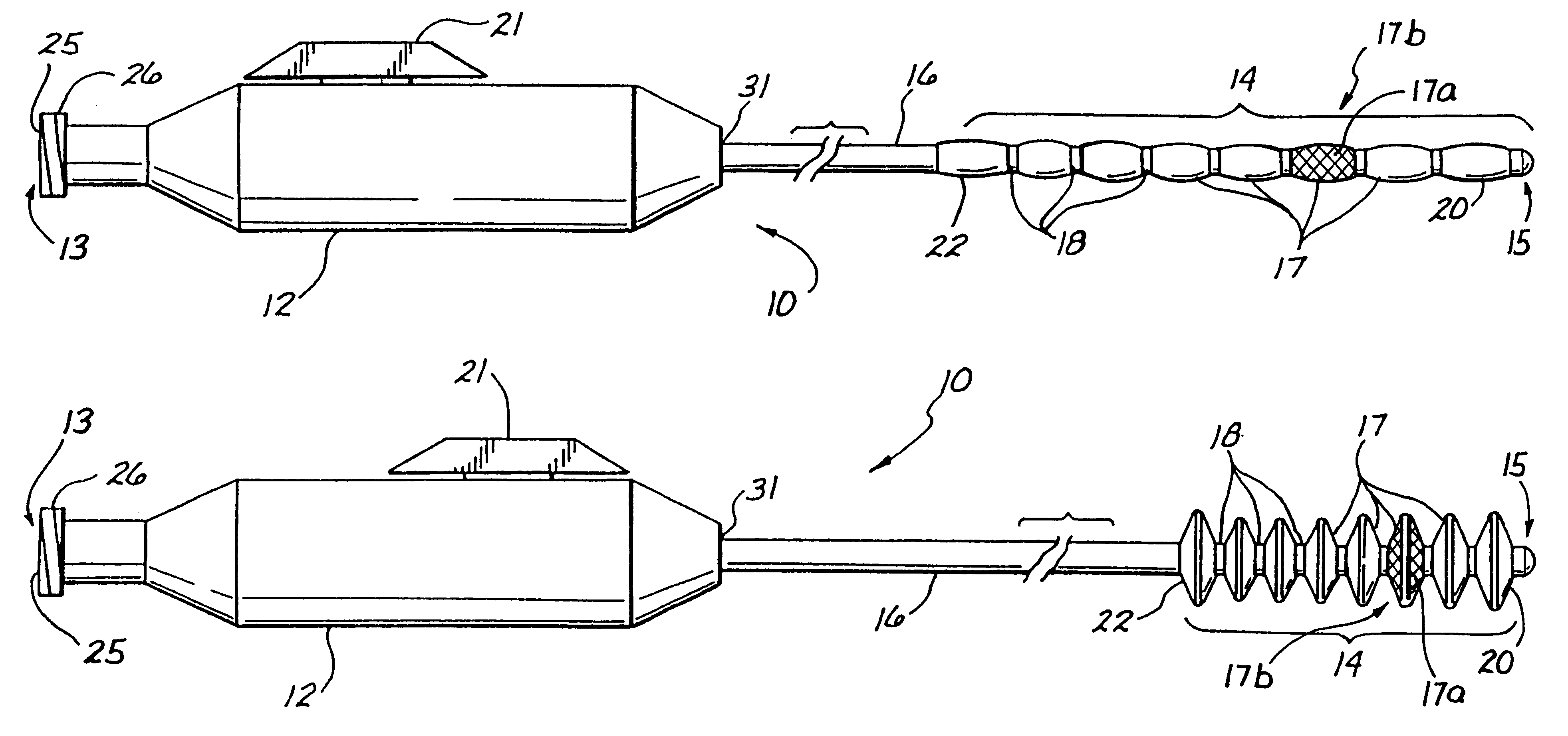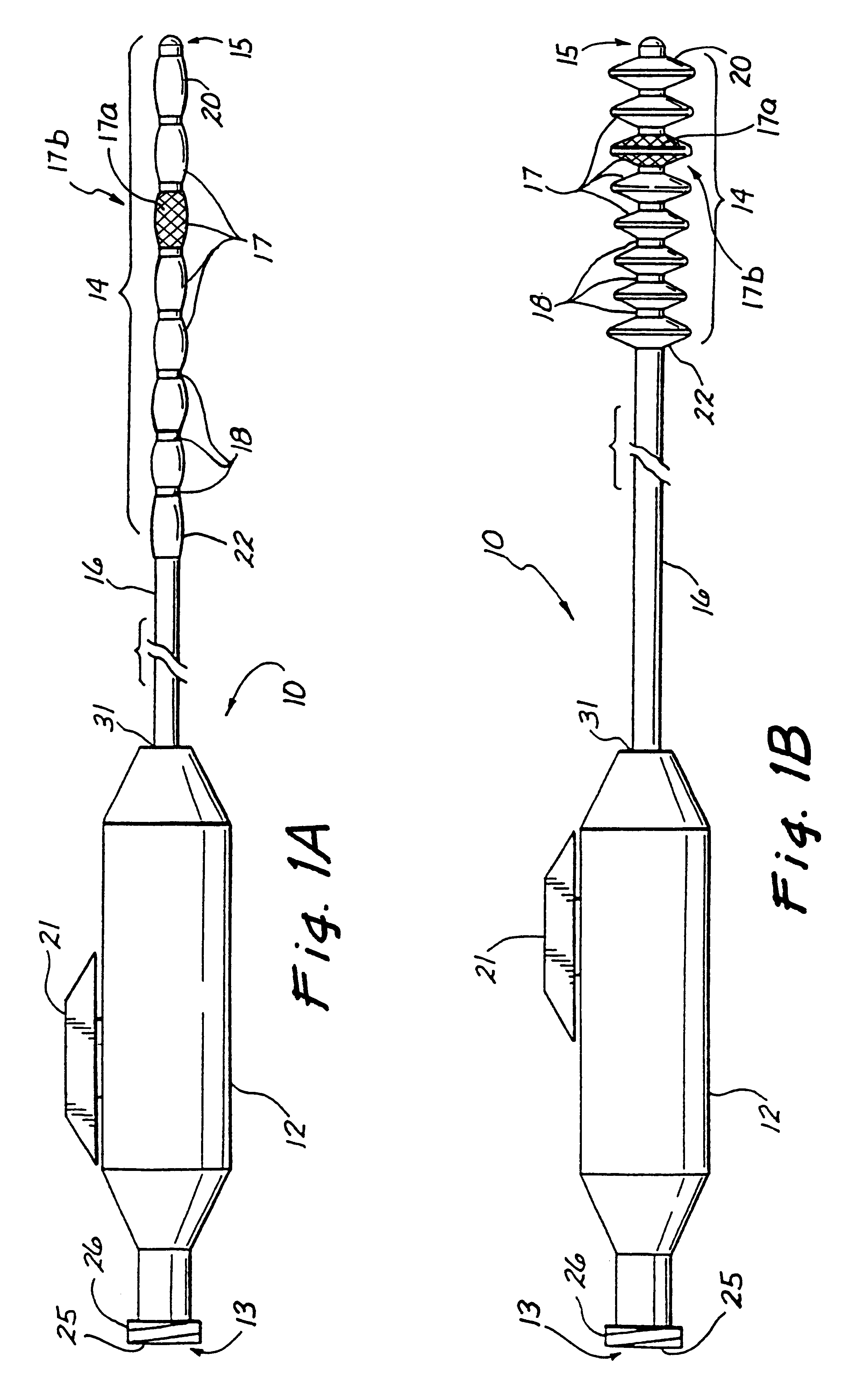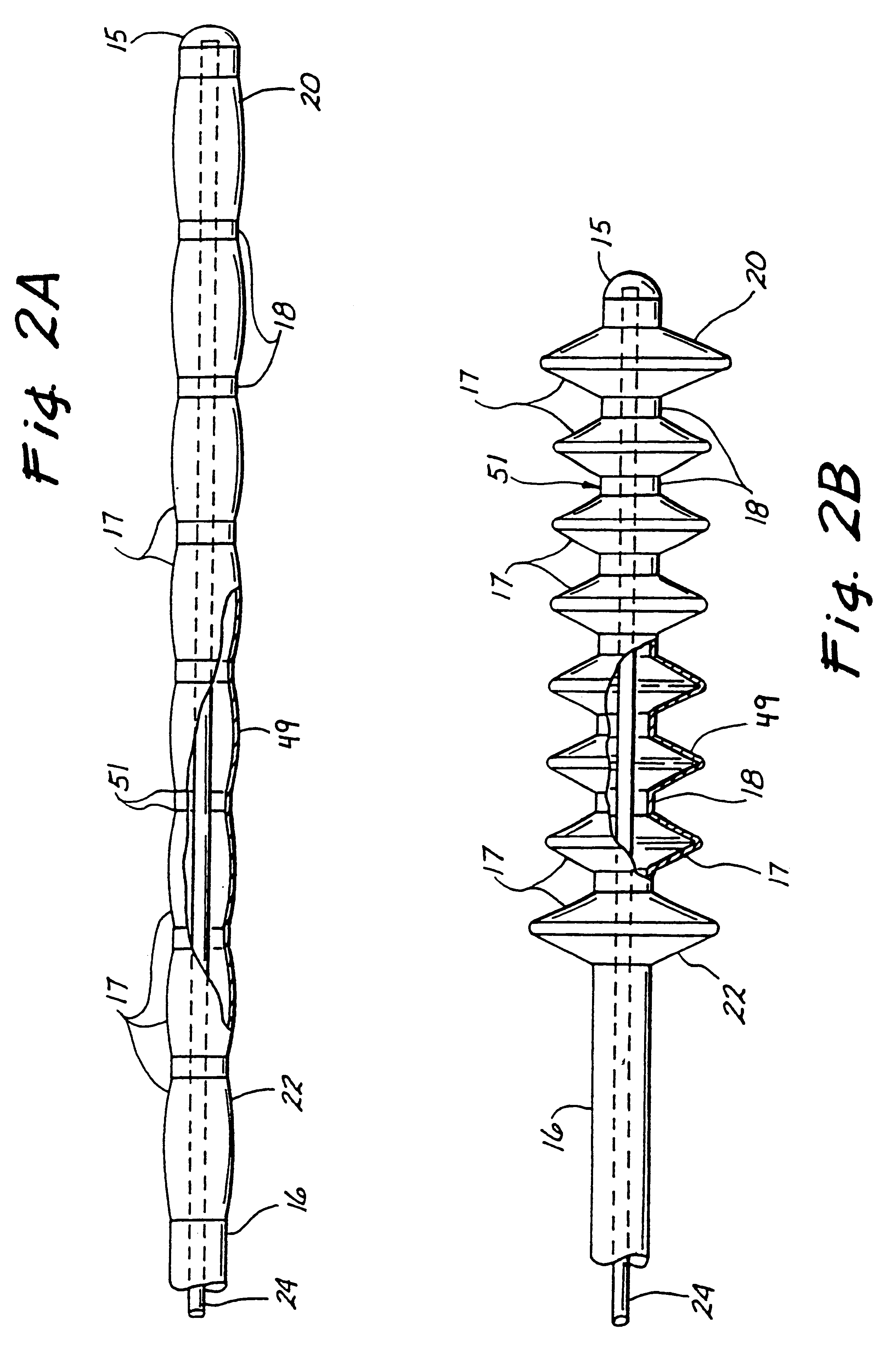The expansion member of the intraluminal catheter of the present invention harnesses a mechanical activation of the expansion member, and thus does not suffer from the problems associated with prior art balloons, blades, and brushes. This mechanical activation of the expansion member provides the user with a tactile feel. Additionally, the expandable intraluminal catheter of the present invention does not rely on the removal mechanism of the prior art. Specifically, the expandable intraluminal catheter of the present invention does not contact and push only the outer perimeter of the occlusive material in the blood vessel. The expandable intraluminal catheter of this invention contacts the occlusive material along the entire length of the occlusive material within the blood vessel to thereby minimize the compression effect suffered by the prior art. The resulting force required to dislodge or mobilize the occlusive material at any one point within the blood vessel is significantly reduced, since compression is reduced and the mobilizing force is distributed over a large surface area. Since the occlusive material is contacted, and partitioned, at a number of points along the length of the occlusive material within the blood vessel, a risk that the occlusive material may be lost, left behind, or swept into the flow of the blood vessel is also reduced.
The expandable intraluminal catheter of the present invention is able to capture, manipulate, and mobilize thrombus and clots in the vascular
system. The expandable intraluminal catheter further provides for the introduction of lysing agents, for example, specifically to, and only to, the
affected site. The expandable intraluminal catheter further facilitates aspiration of the lysing agents from the
affected site.
A number of expandable segments are disposed on the elongate tubular body near the distal body end. The expandable segments include a proximal expandable segment, a distal expandable segment, and at least one intermediate expandable segment. These expandable segments can be mechanically activated by a user when the distal body end is within a blood vessel to first radially expand the distal expandable segment and the proximal expandable segment. Subsequently, the at least one intermediate expandable segment can be expanded. The expansion of the distal expandable segment and the proximal expandable segment allows the user to isolate the occlusive material, and the subsequent expansion of the at least one intermediate expandable segment allows the user to partition the occlusive material to thereby prepare the occlusive material for removal from the body passage. The isolated and partitioned occlusive material within the body passage can then be removed.
The mechanism for mechanically activating the expandable segments includes a wire disposed within the lumen of the elongate tubular body. A proximal end of the wire is connected to the proximal handle end, and a distal end of the wire is connected to the distal body end. This connection of the wire between the handle and the distal body end fixes the length therebetween. An
actuator, connected to the proximal body end, can be actuated by the user to move the proximal body end toward the relatively stationary distal body end. This movement results in an expansion of the expandable segments. Similarly, the user can reverse the direction of the
actuator to increase the distance between the proximal body end and the distal body end to thereby decrease the diameters of the expandable segments. The distal expandable segment and the proximal expandable segment, when expanded, have greater diameters than the at least one intermediate expandable segment, when expanded. The greater diameters of the distal expandable segment and the proximal expandable segment allow a user to isolate an occlusive material between the distal expandable segment and the proximal expandable segment, before the at least one intermediate expandable segment is actuated to partition the occlusive material. The isolation of the occlusive material, between the distal expandable segment and the proximal expandable segment, before the partitioning of the occlusive material, substantially prevents portions of the occlusive material from escaping from between the distal expandable segment and the proximal expandable segment and, consequently, allows for a substantially complete removal of the occlusive material from the body passage.
These expandable segments may be formed of a tubular woven, braided, or meshed material having tiny apertures therein. The distal expandable segment and the proximal expandable segment are preferably covered with non-permeable dispersion coatings. When the expandable segments are activated, the small apertures in the at least one intermediate expandable segment become larger to thereby allow for liquids or
small particles to pass therethrough. Thus, solvents or other medications may be administered through the lumen of the expandable intraluminal catheter, to thereby exit through the apertures of the at least one intermediate expandable segment. Suction may also be applied through the lumen to draw fluids back through the apertures. This suction may aspirate, desiccate, or in other ways mechanically attach portions of chemically treated occlusive material to the at least one expandable segment to thereby facilitate removal of the occlusive material from the blood vessel. The non-permeable dispersion coatings on the distal expandable segment and the proximal expandable segment prevent the solvents, medications, fluids, and materials from escaping from the isolated treatment area, which is defined between the distal expandable coated segment and the proximal expandable coated segment.
The mechanical activation of the plurality of expandable segments, in addition to providing a tactile feel to the user, provides an expansion mechanism which has a relatively smooth outer surface for non-destructive
insertion into the blood vessel. Subsequently, the mechanical activation of the plurality of expandable segments provides relatively rigid enlarged-
diameter segments for removal of the occlusive material from the blood vessel. According to another feature of the present invention, an expandable distal member, formed of elastomeric foam or a balloon, can be placed at the distal body end of the expandable intraluminal catheter tube to further facilitate effective removal of the occlusive material from the blood vessel.
 Login to View More
Login to View More  Login to View More
Login to View More 


